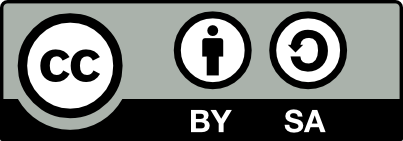
A Practical Introduction to Modern JavaScript
A Practical Introduction to Modern JavaScript
About the Book
The book has four parts.
Part I deals with the fundamentals of the latest version of JavaScript. Expect 2018-19 standards.
Part II dives a bit deeper into the execution of JavaScript code and the various JavaScript types.
Part III introduces JavaScript for web development. You will learn how to submit an AJAX request, how to manipulate the DOM, and how to parse JSON files.
Part IV describes the functional programming paradigm that perfectly suits JavaScript. You will learn about higher order functions, currying, partial evaluation, and recursion.
Translations
Table of Contents
-
Introduction
- The Mission of this Book
- JavaScript on the Client
- JavaScript on the server
- Other JavaScript Use Cases
- JavaScript Domination on the Job Market
- Why is it easier than ever to become a JavaScript developer?
- JavaScript learning experience according to science
- Summary
- Part I: JavaScript Fundamentals
-
JavaScript Fundamentals
- Your First JavaScript Line
- Comments
- Data types in JavaScript
- The number type
- Strings and escape sequences
- Variables: let, const, and var
- Arrays
- The Object type
- Functions
- Immediately Invoked Function Expression
- Variable Scopes and Shadowing
- The typeof operator
- Requesting Input from the User
- Some more operators
- An Introduction to Control Structures
- Selection in Depth: if-else and switch
- Iteration: Loops and Recursion
- The Spread Operator, Destructuring, and Rest Parameters
- Using JavaScript with HTML and CSS
-
Part II: JavaScript Types in Depth
- Using Strings in JavaScript
- Using Arrays in JavaScript
- Using Objects in JavaScript
- Array-Like Objects
- Functions in JavaScript
- Scopes: var, let, const
- Prototypal Inheritance
- JavaScript Errors
- Closures
- Cloning in JavaScript
- JavaScript Promises
- Strict mode
-
Part III: Introduction to Web Development
- Accessing the DOM
- Event Handling in JavaScript
- JSON
- AJAX Requests in JavaScript
- Using Cookies
- setTimeout and setInterval
- NodeJs and NPM
- Webpack
- Your Final Project
-
Part IV: Functional Programming with JavaScript
- Principles of Functional Programming
- Map-Reduce-Filter
- Currying and Partial Evaluation
- Recursion
- Higher order functions
The Leanpub 60 Day 100% Happiness Guarantee
Within 60 days of purchase you can get a 100% refund on any Leanpub purchase, in two clicks.
Now, this is technically risky for us, since you'll have the book or course files either way. But we're so confident in our products and services, and in our authors and readers, that we're happy to offer a full money back guarantee for everything we sell.
You can only find out how good something is by trying it, and because of our 100% money back guarantee there's literally no risk to do so!
So, there's no reason not to click the Add to Cart button, is there?
See full terms...
Earn $8 on a $10 Purchase, and $16 on a $20 Purchase
We pay 80% royalties on purchases of $7.99 or more, and 80% royalties minus a 50 cent flat fee on purchases between $0.99 and $7.98. You earn $8 on a $10 sale, and $16 on a $20 sale. So, if we sell 5000 non-refunded copies of your book for $20, you'll earn $80,000.
(Yes, some authors have already earned much more than that on Leanpub.)
In fact, authors have earnedover $14 millionwriting, publishing and selling on Leanpub.
Learn more about writing on Leanpub
Free Updates. DRM Free.
If you buy a Leanpub book, you get free updates for as long as the author updates the book! Many authors use Leanpub to publish their books in-progress, while they are writing them. All readers get free updates, regardless of when they bought the book or how much they paid (including free).
Most Leanpub books are available in PDF (for computers) and EPUB (for phones, tablets and Kindle). The formats that a book includes are shown at the top right corner of this page.
Finally, Leanpub books don't have any DRM copy-protection nonsense, so you can easily read them on any supported device.
Learn more about Leanpub's ebook formats and where to read them

